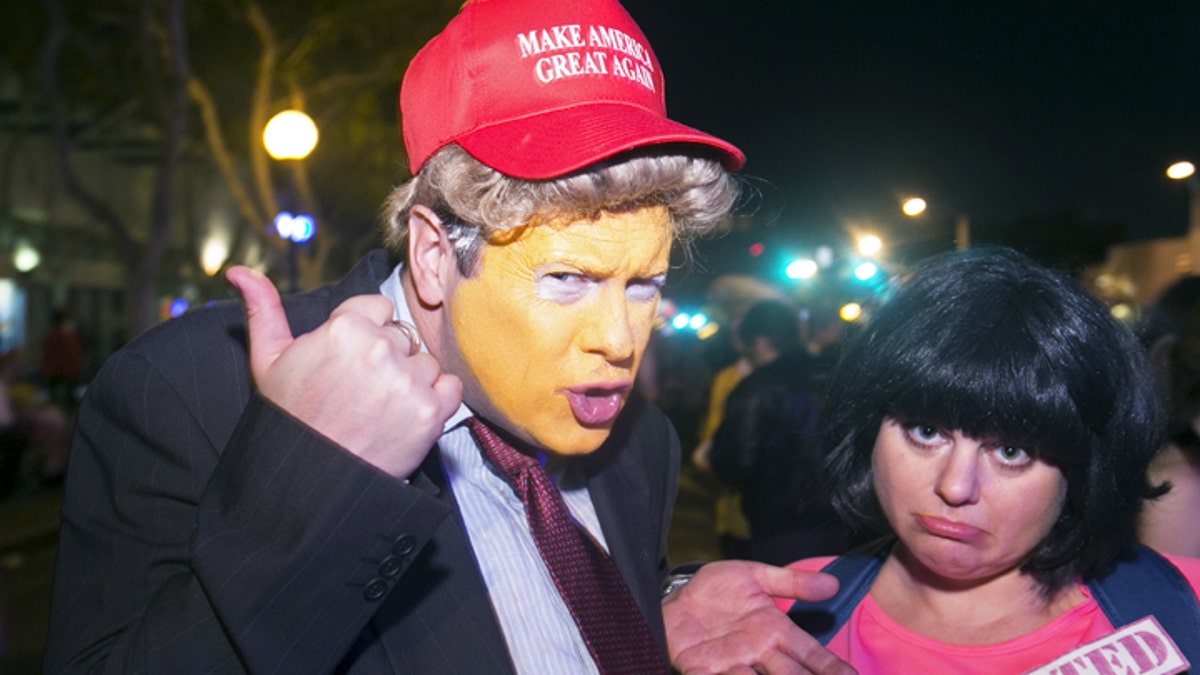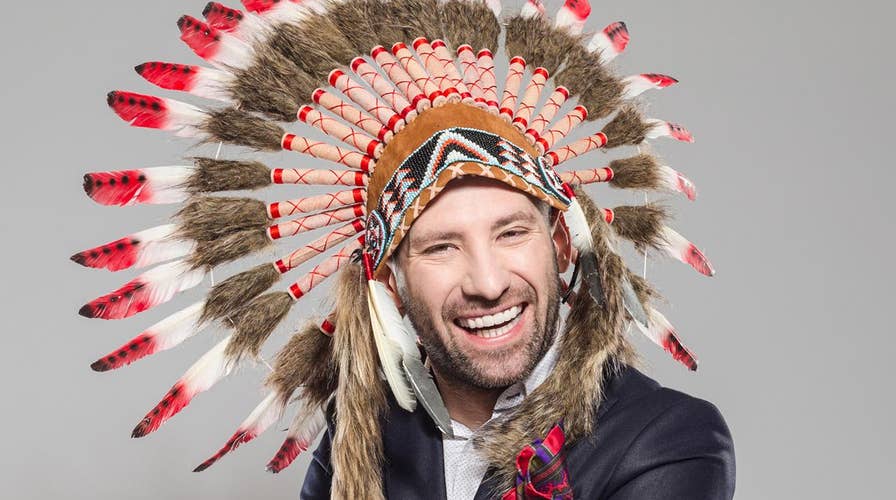Halloween: Schools crack down on insensitive costumes
From first-graders to college seniors, schools are cracking down on a wide swath of Halloween costumes. Watch the video to see what’s considered offensive
It’s that time of the year again, when the leaves turn, the air becomes crisp and Americans of all ages don masks and costumes to hit the streets in search of sweets, shindigs and maybe a bit of mischief.
But as the U.S. gears up for Halloween, young people are finding that their outfit choices are becoming increasingly limited as institutions from grade schools to major universities clamp down on controversial costumes.
From creepy clowns to Caitlyn Jenner outfits, schools across the country have in recent years issued everything from warnings to bans on costumes that could be construed as inappropriate, publicly incorrect or culturally insensitive.
“This obnoxious undertaking of public shaming is perpetrated by a temperamental culture who engages in it simply to avoid looking at its own inconsistency and ugliness for one more day,” comedian Jim Norton wrote in an opinion piece for Time. “True tolerance would be encouraging people to dress up on Halloween however they wish and if they make fools out of themselves, they would hopefully learn from the embarrassment.”
Tufts University last year threatened investigations by campus police against any student whose costume was deemed offensive, especially if the outfit is thought to be culturally appropriated or “relating to tragedy, controversy, or acts of violence.” Some costumes that have fit that description in the past include geishas, Native Americans, Confederate soldiers or anything involving wearing blackface and/or a sombrero.
The University of Texas handed out a 29-point checklist for avoiding offensive costumes, as noted by The College Fix. It included any “generalized representation” of Asian culture or “Indigenous” cultures, such as “Cowboys and Indians.”
St. Thomas University in Minnesota recently distributed a flier outlining “unacceptable” costumes that included, “Wearing Native American headdresses, dressing up as a ‘Mexican’ by wearing a sombrero, dressing as a ‘geisha,’ any form of blackface.”

Reuters
Princeton University has planned a seminar with students to “engage in a dialogue about the impact of cultural appropriation, Halloween, and why culture is not a costume.”
While the warnings by universities – some of which are also offering counseling to offended students and encouraging them to report offensive costumes – are nothing new and are meant to create a more tolerant environment, some critics question how far is too far.
“One wonders what’s left,” Robby Soave, an associate editor at the Reason Foundation, a libertarian think tank, wrote last year in the Daily Beast. “Many students who heed the above guidelines are presumably restricted from dressing up as samurais, hombres, geishas, belly dancers, Vikings, ninjas, rajas, French maids, Bollywood dancers, Rastafarians, Pocahontas, Aladdin, Zorro, or Thor.”
Soave added: “Garden-variety Halloween costumes — vampires, zombies, etc. — would seem to run afoul of the prohibition on ‘tragedy and acts of violence.’ And this year’s topical costumes — Harambe, Cecil the Lion, Donald Trump — invoke controversy, so they’re out, too.”

Reuters
Disaffected minority groups are only one part of the costume crusade. Another type of outfit that schools have taken issue with are ones that are just in bad taste.
The company HalloweenCostumes.com recently pulled an outfit of Holocaust victim Anne Frank from its website after it was hit with a slew of criticism.
“There are more appropriate ways to commemorate the legacy of Anne Frank than through a Halloween costume, which is offensive and trivializes her suffering and the suffering of millions during the Holocaust,” Alexandra DeVitt, a spokesperson for the Anne Frank Center for Mutual Respect, told Fox News. “We are pleased that the costume has been pulled.”
From costumes of murdered teenager Trayvon Martin or ones of Caitlyn Jenner to Bill Cosby groping a woman or Donald Trump grabbing a woman in her private parts, any outfit that addresses rape or violence is a no-go. Some grade schools have gone so far as to ban superhero costumes or ones where a child carries a toy weapon.
“We send out letters a few weeks before Halloween telling parents that their children cannot wear masks or bring weapons of any kind to the school,” said Kenneth Smith, the principal at Strathmore Elementary School in Aberdeen, N.J., told the New York Times. “We know that kids are kids…but times have changed.”
Then there are the creepy clown costumes.
Clowns have always been a traditional, albeit time-consuming and slightly strange Halloween costume, but amid a rash of reports of evil jesters cropping up across the country, such outfits are getting close scrutiny.
Two clowns were spotted in Greenville, S.C., last year trying to lure a young boy into the woods. Later a knife-wielding clown was arrested for allegedly chasing a teenager through a New York City subway station. These were just two incidents of creepy clown sightings across the U.S last year with “killer clowns” popping up everywhere from Florida to Colorado and leading many schools to not clown around with Halloween costumes.
“I am asking for your cooperation in not allowing your children to dress up as clowns at any school event due to the possible disruption and fear it may cause,” Ron Bolandi, the interim superintendent of schools in Montclair, N.J., said, according to the Guardian. “If anyone shows up with a clown related costume, they will be asked to change or sent home.”





















